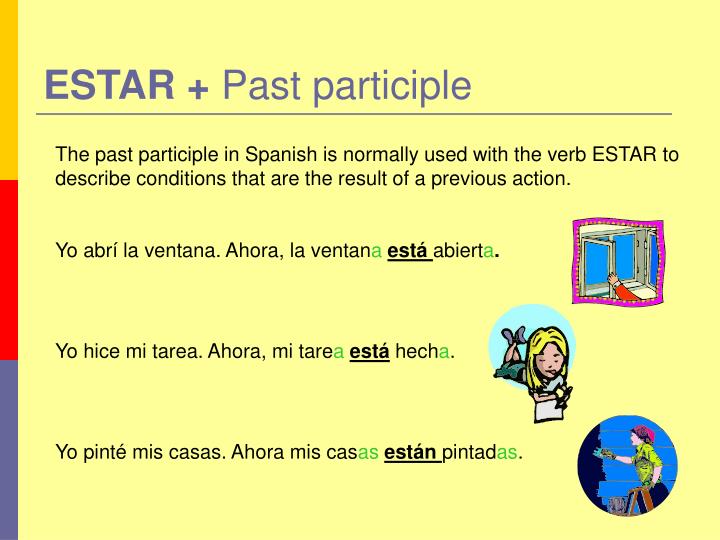
Start with the simple tenses, then the compounds. You can use these words anyway, and they will help you with consolidating any knowledge that you already have. Gerundio (present participle/gerund) = estandoĭon't worry if you are not too sure of the exact use of each tense. Learning the drills vertically (which is less commonly taught due to the tendency to teach tense by tense) will teach you the different endings for each pronoun, deepening the depth and breadth of your knowledge of the verb.īy learning the whole verb table you will be exposed to ALL the different words for the different tenses (called conjugations) very early.Ĭompound Tenses estar - Participio (past participle) = estado TENSE (horizontally) through the pronouns, which is the normal way that students learn verb tenses. PRONOUN (vertically) - that is I, you, we, he, she, they etc, through the tenses, AND also by: It takes about three minutes to practise your Spanish verb drills both by BOTH: Learn the Tenses of ESTAR with our Verb Table Our 2 Tier Verb Tables are much more effective than most traditional verb tables because you can learn all the tenses both by work your way through the verb table below. We talk a little more about this below but first. Cartoons of a SER-pent will help you remember 'ser' useages, and cartoons of ' EaSTAR' bunnies will help you remember the useages of 'estar'. This course uses cartoon characters to make it easier to understand and remember where and when to use which verb.

But as you learn the details you can keep returning to the two above concepts which summarize the differences. Once you understand that we can go on to flesh out the details of what these concepts mean. Read the two sentences above again ten times, and write them down, because they explain the fundamental differences between the two verbs. These two verbs confuse the living daylights out of many students of Spanish. If you can grab and understand these two differences early you will have much less trouble in understanding the differences. What are its inherent characteristics, its true being, its character. SER means 'to be' in the sense of WHAT something is. It is also very important because it is used to make verb phrases like 'I am running, I was playing, to be swimming.'


It is the most important verb in the Spanish language, and is the most sought after for its conjugations in terms of number of searches on the internet.Įstar means 'to be' in the sense of HOW something is, and learners of Spanish need to learn the difference between it, and the other main word for 'to be' which is 'SER'. ESTAR - the most important verb in Spanish.


 0 kommentar(er)
0 kommentar(er)
